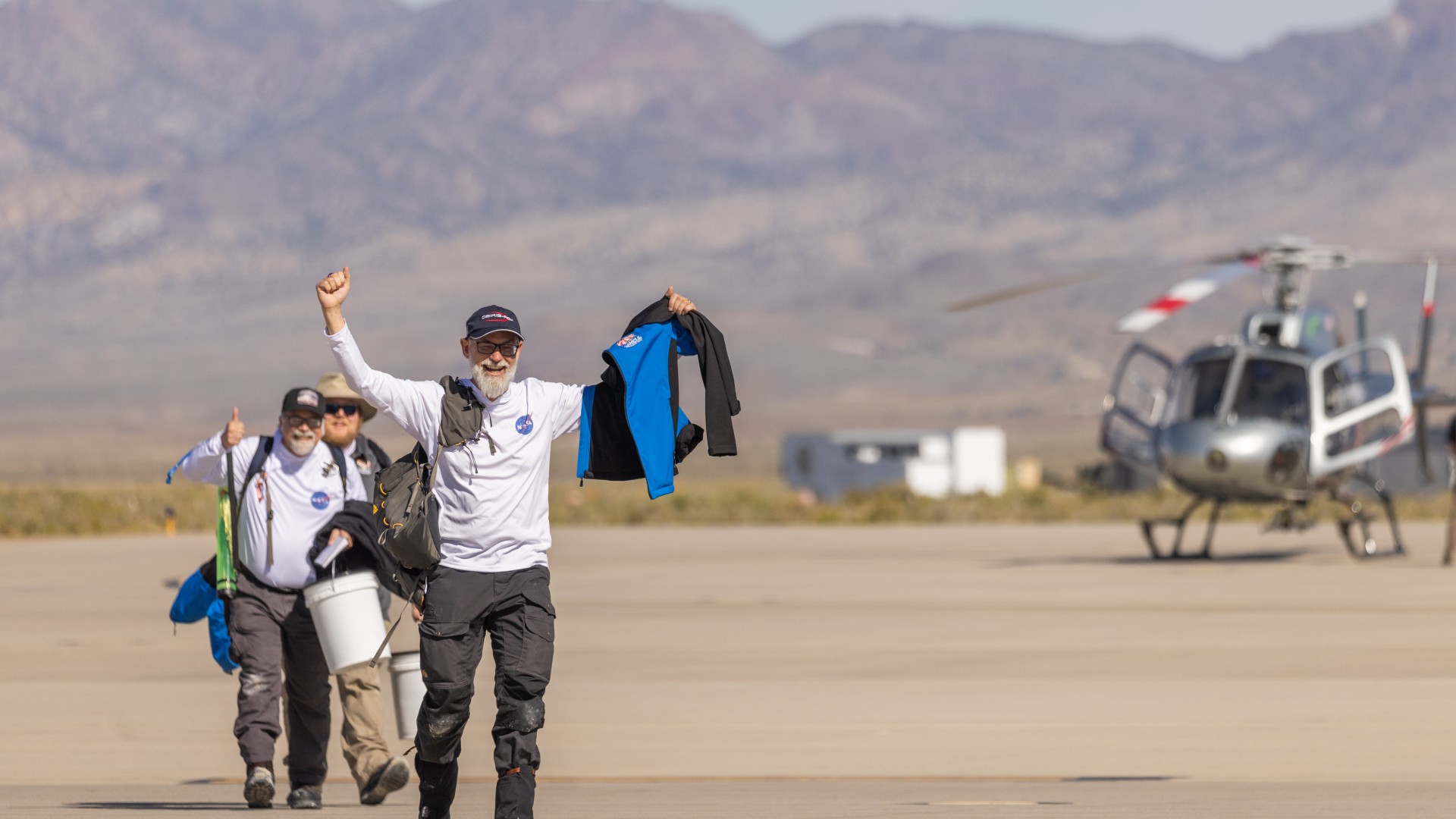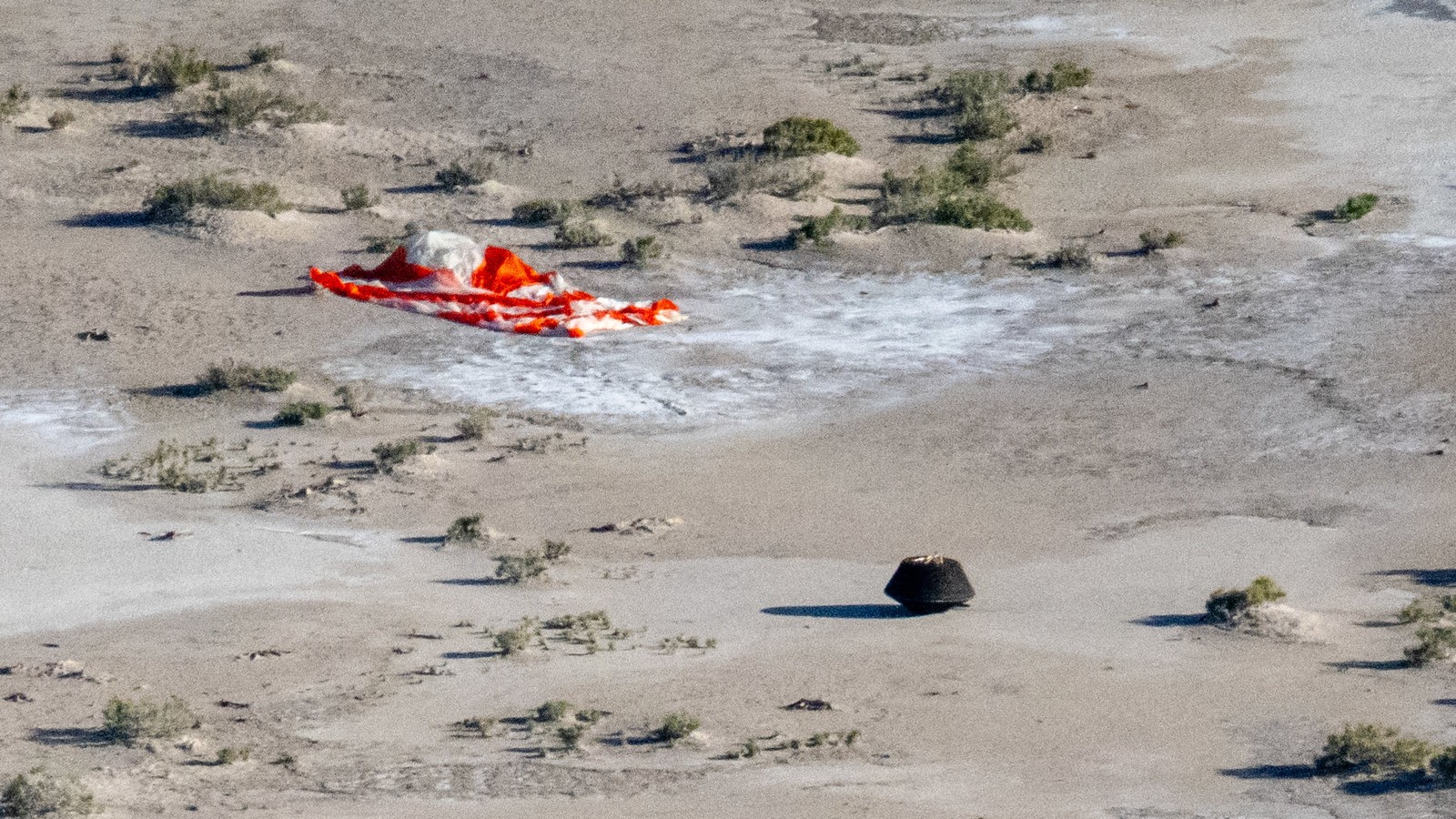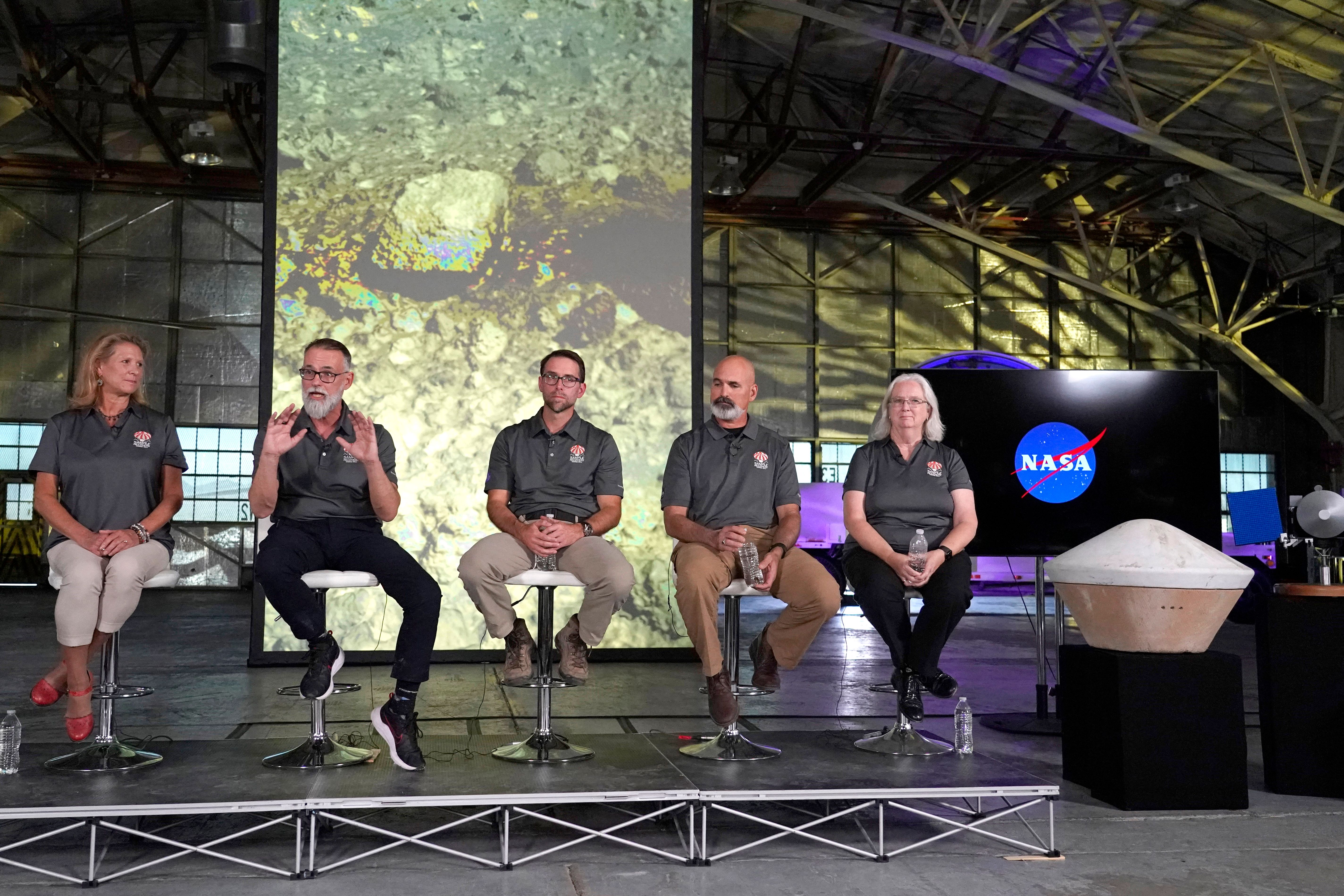'I literally broke into tears': The scientist leading NASA's epic OSIRIS-REx asteroid mission just had the greatest day ever
'From this point on, we know what to do. We're safe. We're home. We did it.'

DUGWAY PROVING GROUND, Utah — The atmosphere was electric at the U.S. Army's Dugway Proving Ground as all eyes were on the OSIRIS-REx mission's sample return capsule during its 83-mile (133 kilometers) descent from space to the desert floor. Nearly 20 years of planning, problem-solving and patience culminated in a dramatic and highly choreographed recovery operation that took place at one of the most remote and isolated Army bases in the continental United States.
Anxiety felt by onlookers was palpable as four helicopters operated by NASA and the U.S. Air Force took off just after 7 a.m. local time from the Michael Army Air Field. They were headed northwest into the barren sands of the U.S. Department of Defense's sprawling Utah Test and Training Range (UTTR) nearly an hour before a capsule containing priceless samples of asteroid Bennu was set to enter Earth's atmosphere at 27,000 mph (43,450 km/h).
But emotions were much higher aboard one of the helicopters waiting for the capsule.
During a press briefing held on Sunday (Sept. 24) in a hangar at Michael Army Airfield, Dante Lauretta, principal investigator for the OSIRIS-REx mission, described what was going through his mind while riding in a recovery helicopter to the capsule's landing zone. Lauretta was on his way to see if the mission he'd spent two decades of his life planning for would end with a successful recovery or with a smoking crater in the Utah desert.
"I was just trying to make sure I didn't totally break down in front of an international audience, right? It's like, okay, you got to keep it together," Lauretta said regarding his initial uncertainty about whether or not the capsule's two parachutes had opened as designed. Luckily, a few minutes later, word came that the main parachute indeed deployed. And soon after, Lauretta received word that the landing was a resounding success.
"That's when I just emotionally let it go. You know, tears were streaming down my eyes. I was like, okay, that's the only thing I needed to hear. From this point on, we know what to do. We're safe. We're home. We did it."
Related: NASA's OSIRIS-REx lands samples of asteroid Bennu to Earth after historic 4-billion-mile journey
Get the Space.com Newsletter
Breaking space news, the latest updates on rocket launches, skywatching events and more!
Lauretta elaborated more about the tension and release he experienced as he waited to hear if the capsule's parachute had fully opened as it sped through the atmosphere. "I knew things were supposed to be happening on a nominal timeline; that I wasn't getting call outs. But again, we could have just have radio dropouts there. And then we heard 'main chute detected,' and I literally broke into tears."
"I knew the moment the chute opened, that was it. We knew what to do," Lauretta continued. "There were no surprises left. And it was overwhelming relief, gratitude, pride, awe and really trying to convince myself that I wasn't dreaming; that it was actually happening; that the chute was open; that the capsule was coming down; and we got that science treasure in hand."

The uncertainty over the parachute was caused by the fact that mission teams were unable to determine if the capsule's drogue chute had deployed or not. Drogue parachutes (or drogue chutes) are typically smaller parachutes that deploy from a craft moving at high speeds in order to either slow the craft, stabilize its movement or to help deploy a second, larger main parachute.
From their vantage points on the ground and in multiple aircraft providing live footage of the capsule's return to Earth, recovery teams were unable to see if the 31.5-inch (80-centimeter) drogue chute had deployed at 102,300 feet (31,181 meters) as planned.
During the post-landing press briefing on Sunday, Mike Moreau, deputy project manager for the OSIRIS-REx mission at NASA Goddard Space Flight Center in Maryland, explained that while his team is still unsure if the drogue chute deployed at all, it ultimately is a moot point because the main parachute did, in fact, deploy.
"We don't know if the drogue chute deployed. Because we don't know if we can see that in the imagery. The imagery that we saw was not positive," Moreau said. "What we do know is that the main parachute came out. It came out a little bit earlier than we expected, but that time difference was within the family of variation that we expect from the atmosphere. So, that is not really a surprise to us."

While the capsule's successful landing might be the end of this stage of the mission, drogue chute or not, it marks the beginning of a whole new chapter of groundbreaking science.
Lauretta and other scientists around the world can now begin studying the samples and analyzing Bennu's composition in order to glean information about the chemical history of our solar system.
The rocks and dust samples taken from asteroid Bennu will be divided up for study among various scientific institutions and space agencies to help scientists around the world begin answering some of the most burning questions about our cosmic neighborhood — and possibly even help us understand how life got started here on Earth.
Because asteroids formed when our solar system was quite young, the analysis of these samples could help reveal how water — or even the building blocks of life, such as amino acids — made their way to our planet as asteroids bombarded a young Earth.
And, even though these samples will soon be in scientists' hands for years of study, the OSIRIS-REx spacecraft isn't finished with its groundbreaking scientific mission.
While the probe was designed to only take a sample from one asteroid, it still has plenty of science left in store. It will now make a two-year journey to the near-Earth asteroid Apophis under the name OSIRIS-APEX, where it will study the space rock up close to help scientists better understand the characteristics of yet another relic of the early solar system.
NASA's OSIRIS-REx mission (Origins, Spectral Interpretation, Resource Identification and Security - Regolith Explorer) launched in 2016 from Cape Canaveral Space Force Station in Florida to visit asteroid Bennu and collect samples from the space rock for return to Earth.
The mission is NASA's first such asteroid sampling mission, but the third worldwide (Japan's Hayabusa-1 and Hayabusa-2 previously returned space rock samples).
The OSIRIS-REx probe reached Bennu in 2018, spent two years orbiting its subject, and finally collected a sample from the asteroid's surface in 2020. Then, the spacecraft began its 1.2-billion-mile (1.9 billion km) return voyage on May 10, 2021.
Join our Space Forums to keep talking space on the latest missions, night sky and more! And if you have a news tip, correction or comment, let us know at: community@space.com.

Brett is curious about emerging aerospace technologies, alternative launch concepts, military space developments and uncrewed aircraft systems. Brett's work has appeared on Scientific American, The War Zone, Popular Science, the History Channel, Science Discovery and more. Brett has English degrees from Clemson University and the University of North Carolina at Charlotte. In his free time, Brett enjoys skywatching throughout the dark skies of the Appalachian mountains.









